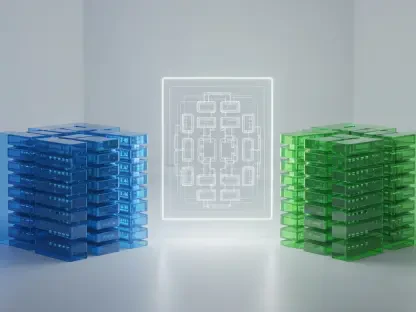In an ever-evolving world of software and digital design, understanding neurodiversity has never been more crucial. Expert Vijay Raina, a thought leader in enterprise SaaS technology and software design, brings a wealth of knowledge on creating accessible experiences that cater to the broad spectrum of how individuals think and interact with technology. This conversation delves into the importance of designing for neurodiversity from both an empathetic and practical perspective, emphasizing the value it can bring to the user experience as a whole.
What does designing for neurodiversity mean, and why is it important?
Designing for neurodiversity means recognizing that each individual interacts with the web and technology differently. It’s about understanding that people aren’t merely exceptions but unique users with varied ways of thinking and functioning. This approach is critical because it allows us to create inclusive experiences that are beneficial for everyone, not just the neurodivergent population.
How can considering neurodiversity early in the design process benefit all users?
By integrating neurodiversity early in the design process, designers can build experiences that are more accommodating to a variety of needs from the start. This foresight helps avoid last-minute changes or retrofitting required to meet accessibility standards later on, resulting in designs that inherently serve a broader audience more effectively.
Can you explain the difference between “neurodiversity” and “neurodivergent”?
Neurodiversity is the concept that neurological differences are natural variations in the human population, involving no intrinsic deficit. On the other hand, neurodivergent refers to individuals whose cognitive patterns differ from what is typically expected, such as those with ADHD, autism, or dyslexia. Both terms highlight the diversity in human experiences and abilities.
What are some traits of neurodivergent individuals, and how can they be strengths in design?
Neurodivergent individuals often exhibit remarkable creativity, unique perspectives, and out-of-the-box thinking, offering imaginative solutions quickly. Their strong attention to detail, long-term memory, and intrinsic sense of fairness and accuracy can provide valuable insights and enrich the design process significantly.
Why is it essential to involve a diverse group of users in the design process, including those with accessibility needs and neurodivergent traits?
Involving a diverse group of users in the design process ensures that different needs and perspectives are considered from the outset. It’s crucial for identifying potential accessibility challenges and creating solutions that offer a seamless and inclusive user experience, thereby enhancing the product for all users.
How does better accessibility in design lead to better outcomes for everyone?
Improved accessibility ensures that the product is usable by as many people as possible without barriers. When accessibility is prioritized, it results in more flexible and user-friendly designs that accommodate a wide audience, ultimately leading to higher satisfaction and engagement among users.
Could you share some resources or tools that can help in designing for neurodiverse users?
Absolutely. Resources like Stéphanie Walter’s Neurodiversity and UX toolkit provide guidelines and tools for understanding and designing for cognitive differences such as dyslexia and ADHD. Moreover, Will Soward’s Neurodiversity Design System offers a set of standards to guide the creation of accessible learning interfaces, embedding neurodiversity principles seamlessly into UX design.
What are some common misconceptions about neurodiversity in the context of web and UX design?
A prevalent misconception is that neurodivergent considerations are edge cases or secondary needs in design. In reality, acknowledging neurodiversity is about understanding a natural spectrum of human experiences. It’s not an optional add-on but a vital component of holistic design that serves a wide range of users.
How does designing with people, rather than for people, improve the design process?
Designing with people involves collaborating with users to understand their needs firsthand, rather than making assumptions based on perceived general user behavior. This approach yields more accurate, tailored solutions and fosters a sense of connection and empathy between designers and users, enhancing the overall quality of the product.
Could you provide examples of “dos and don’ts” when designing for various neurodivergent needs?
Certainly. Do ensure that interfaces are intuitive, with clear navigation and minimal distractions. Use high-contrast colors for better readability and provide multiple ways to interact with content. Don’t rely solely on color to convey information, and avoid complex instructions or overly dynamic elements that can overwhelm users.
How does involving neurodivergent individuals in the design process enhance creativity and innovation?
Neurodivergent individuals bring diverse perspectives and creative problem-solving skills, often discovering innovative solutions that might be overlooked by neurotypical counterparts. Their involvement in the design process can challenge conventional ideas, leading to breakthroughs and novel approaches in design.
Can you discuss the importance of empathy, determination, and resilience when designing inclusive experiences?
Empathy allows designers to truly understand and cater to diverse user needs, while determination ensures commitment to delivering accessible solutions. Resilience is vital to navigating challenges that arise during the design process, maintaining focus on creating experiences that uphold respect and dignity for all users.
What impact does designing for diversity have on the broader user experience?
Designing for diversity enriches the user experience by accommodating a wide array of needs and perspectives, leading to products that are more intuitive and widely accessible. It builds a culture of inclusivity that not only supports marginalized users but enhances the product’s overall appeal and functionality for everyone.
How can designers stay informed about best practices in inclusive design for neurodiversity?
Designers can stay informed by engaging with the community through workshops, seminars, and reading materials from thought leaders in the field. Participating in user testing sessions with diverse groups and continuously iterating on feedback are also effective ways to ensure that their design practices remain inclusive and up-to-date.
Do you have any advice for our readers?
My advice to designers is to approach accessibility and neurodiversity not just as requirements but as opportunities to innovate and make meaningful impacts. Embrace continuous learning and remain open to feedback, as inclusivity is an evolving journey that requires adaptation and empathy.









